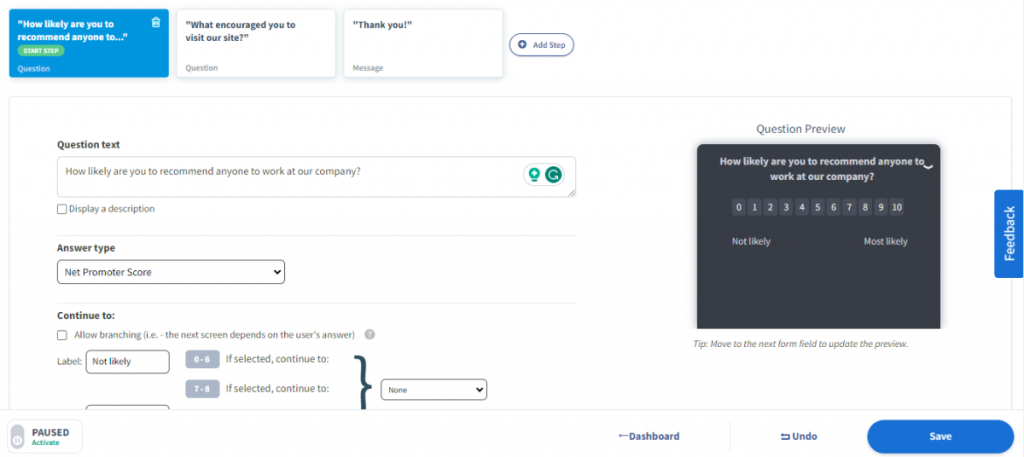Organizations conduct performance evaluations at least once a year to gauge employee performance and growth, but are they really effective?
Despite having the potential to be one of the most efficient ways of exchanging and acting upon feedback, interestingly, only 14% of employees feel the need to improve after a performance review.
Can we deduce from this that there’s much room for improvement in the ways performance reviews are held?
Well, yes.
One way to go about this is through performance evaluation surveys.
In this blog, we will explore innovative approaches to conducting evaluation interviews and examples of effective performance evaluation survey questions, discuss the optimal frequency of these interactions, and offer strategies on how to maximize their benefits.
What Is a Performance Evaluation Survey?
A performance evaluation survey is a tool used by organizations to assess and measure an employee’s job performance, skills, and behavior.
The surveys typically consist of a set of targeted questions that cover different aspects of an employee’s performance, including goal achievement, communication skills, teamwork, and professional development.
Recommended Read: 10 Best Employee Survey Tools to Boost Engagement in 2025
50+ Must-Ask Questions for Your Performance Evaluation Surveys
Here are over 50 must-ask questions for your performance evaluation surveys, categorized based on different types.
These questions can serve as a starting point to create a comprehensive performance evaluation survey that provides valuable insights for employee development and organizational growth.
Goal Achievement
This category focuses on the extent to which employees meet their performance goals and objectives.
- Did you meet your performance goals for this evaluation period?
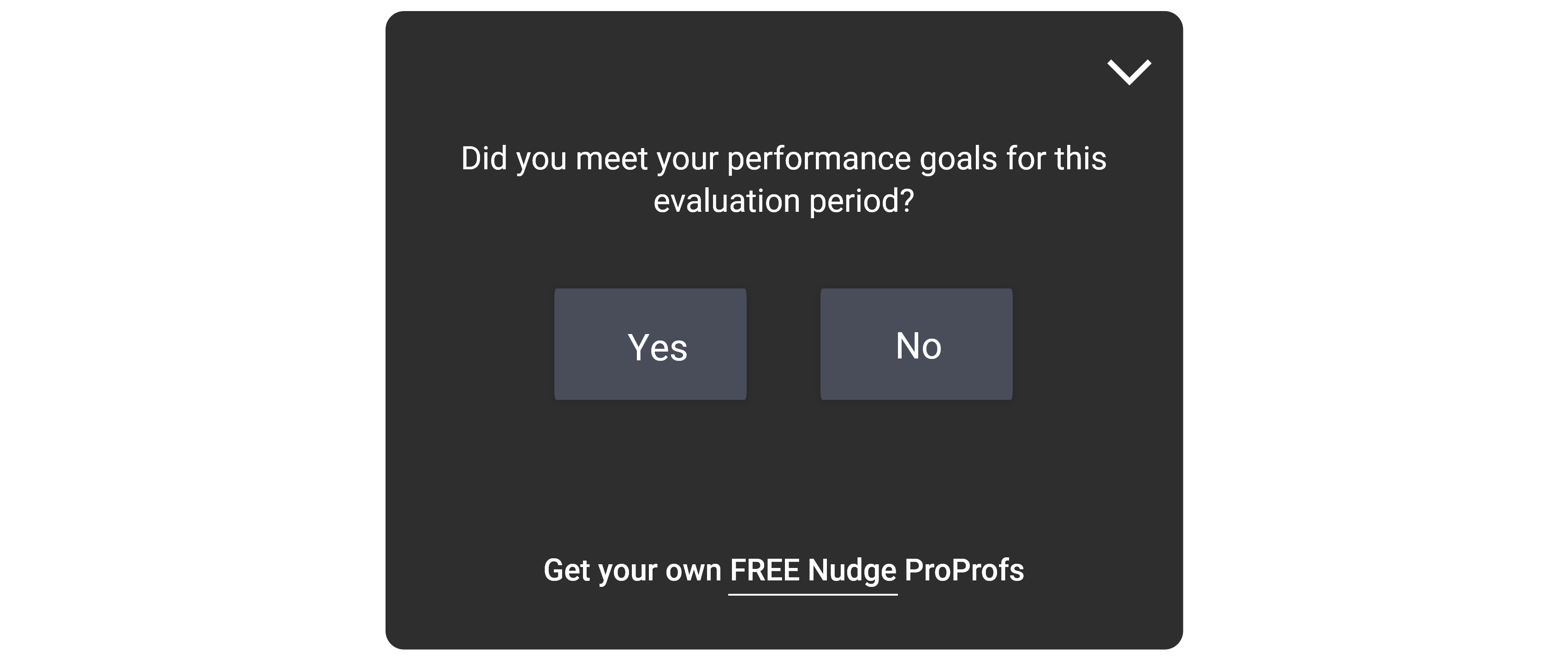
Create Your Own Performance Evaluation Survey Templates
2. What challenges did you face in achieving your goals?
3. Did you feel adequately supported in achieving your goals?
4. How can the organization better assist you in reaching your goals?
Communication and Collaboration
This category assesses how effectively employees communicate and collaborate with their team members and stakeholders.
5. How effectively do you communicate with your team members?
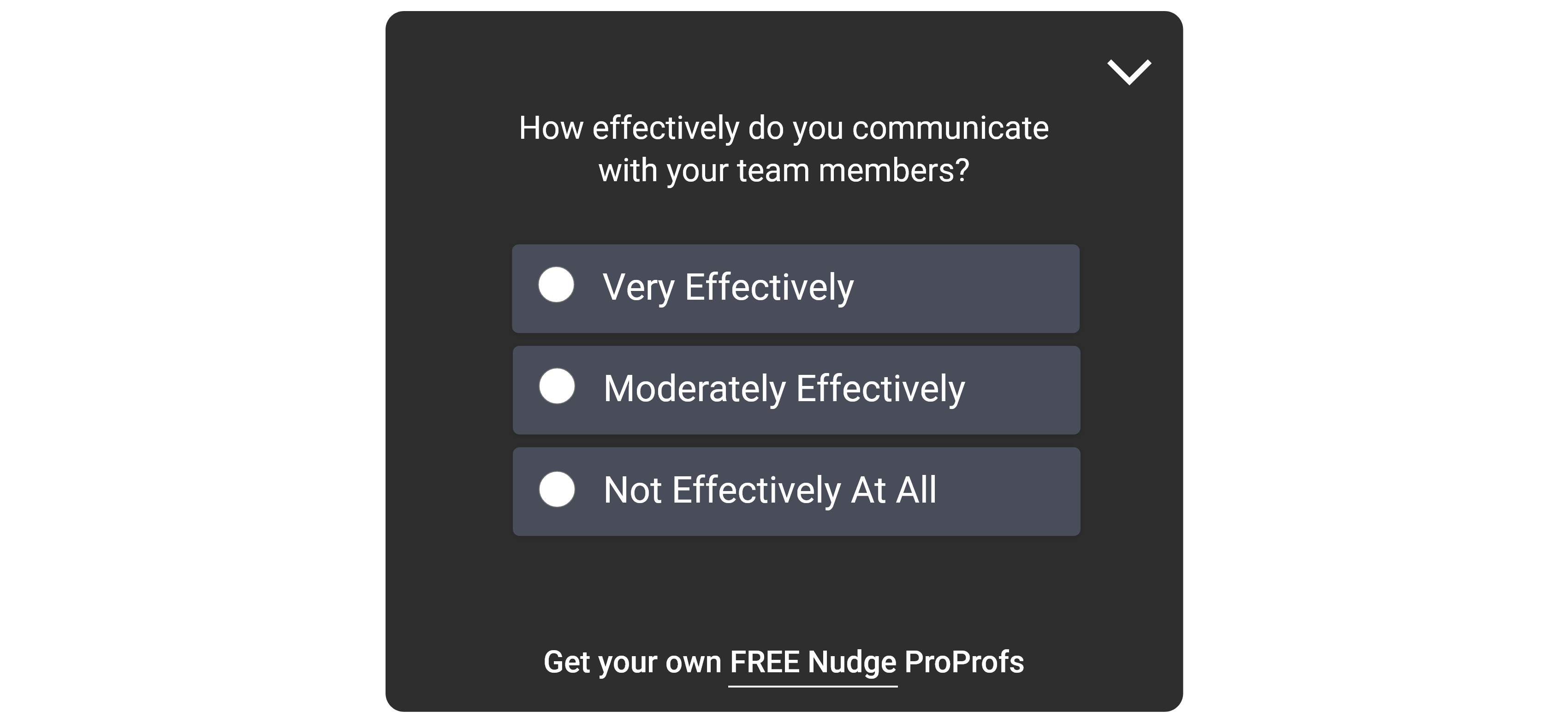
6. Do you actively seek and provide feedback to your colleagues?
7. How well do you adapt your communication style to different stakeholders?
8. How do you contribute to a positive and collaborative work environment?
Leadership and Management
This category evaluates employees’ leadership and management skills in guiding and supporting their teams.
9. How well do you provide guidance and support to your team members?
10. Do you effectively prioritize tasks and manage your time?
11. How do you handle conflicts and resolve issues within your team?
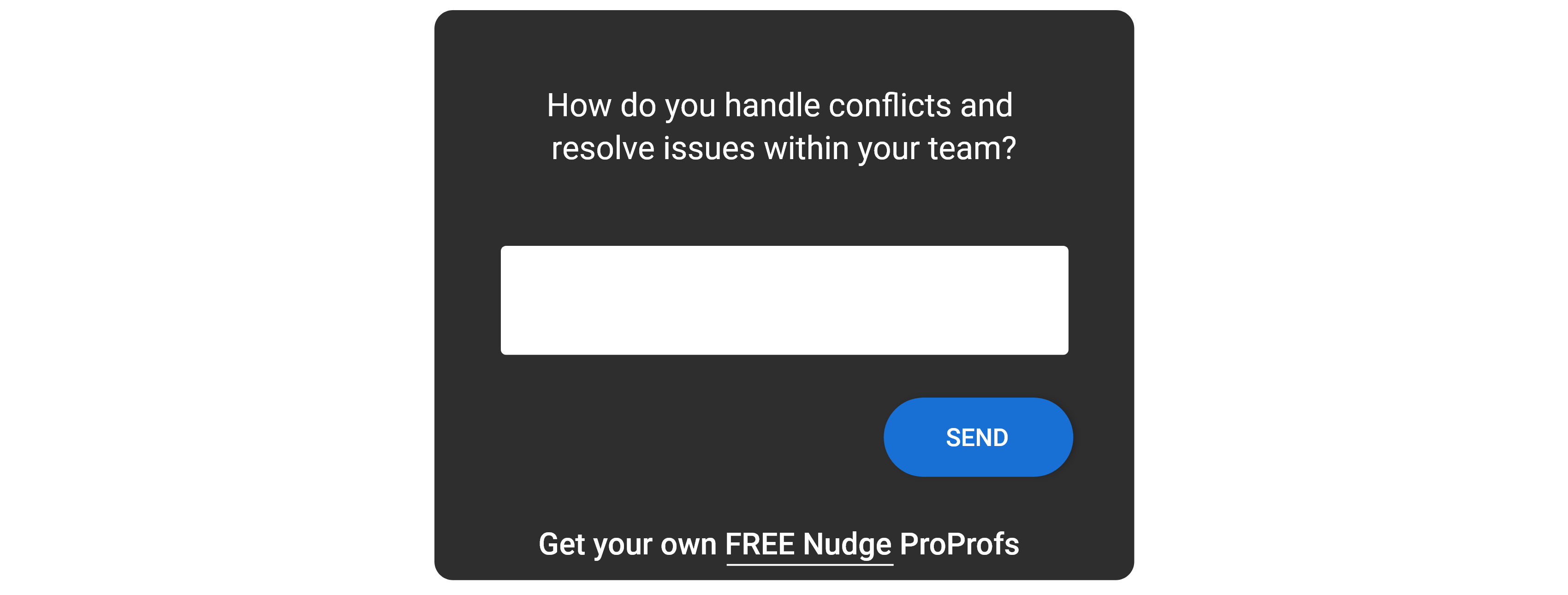
Create Your Own Performance Evaluation Survey Templates
12. How do you motivate and inspire your team to achieve their best?
Problem-solving and Decision-making
This category explores employees’ abilities to analyze problems and make well-informed decisions.
- How well do you analyze situations and make data-driven decisions?
- Do you actively seek and consider diverse perspectives when problem-solving?
- How do you handle unexpected changes or obstacles in your work?
- Describe a challenging problem you faced and how you resolved it.
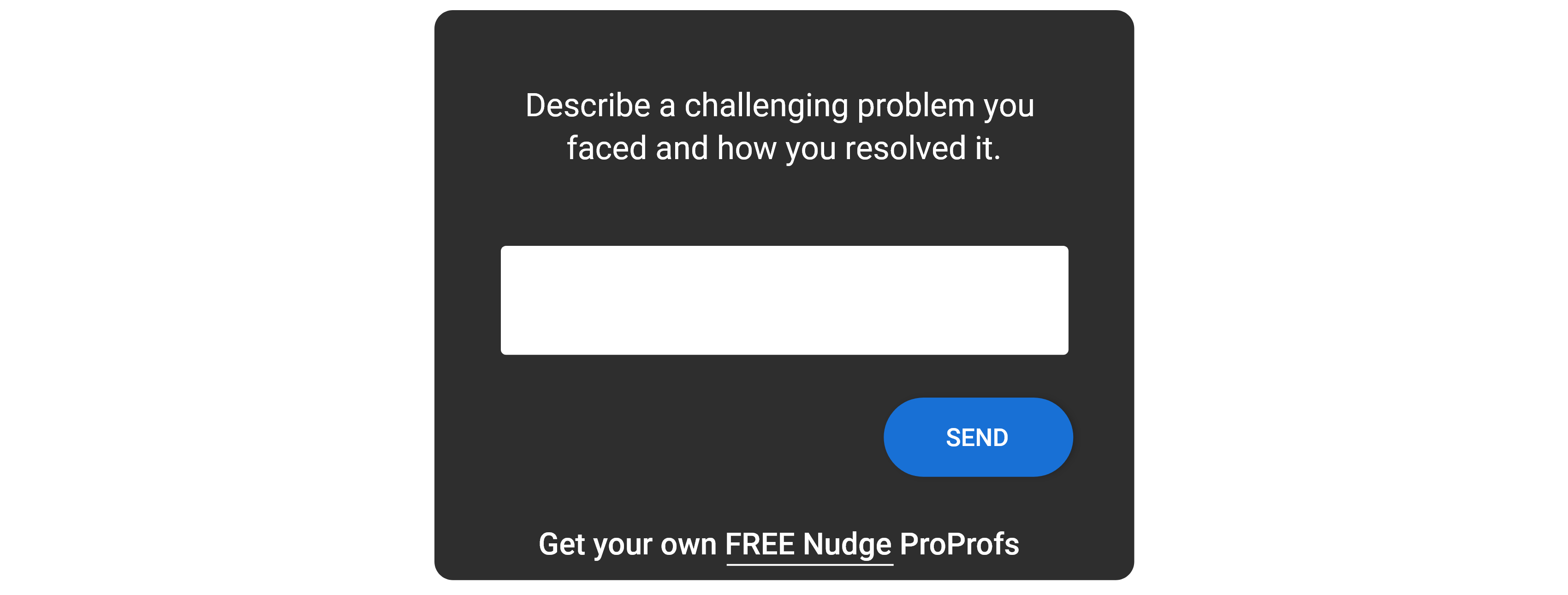
Create Your Own Performance Evaluation Survey Templates
Personal Development and Learning
This category focuses on employees’ commitment to personal growth and continuous learning.
- What steps have you taken to enhance your skills and knowledge?
- Describe a specific area where you have shown growth and development.
- Do you proactively stay updated on industry trends and best practices?
- How do you seek feedback and use it to improve your performance?
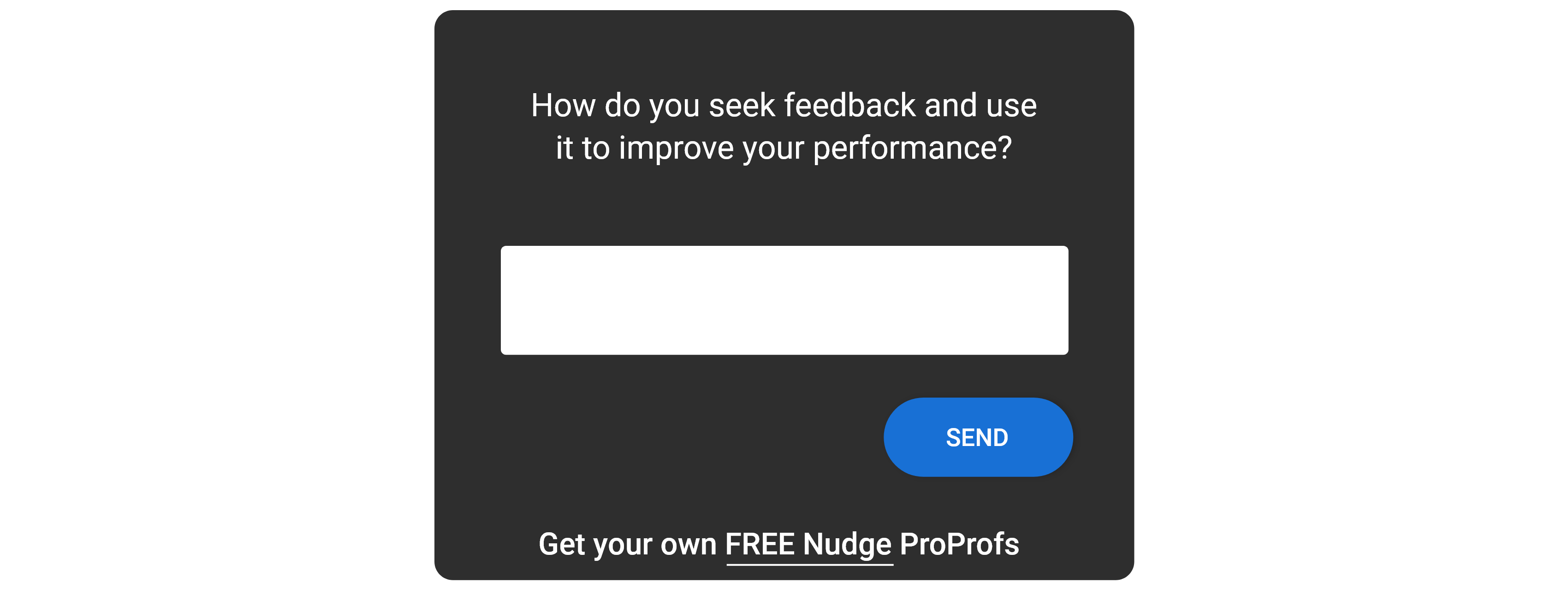
Teamwork and Collaboration
This category assesses employees’ abilities to work effectively as part of a team and contribute to a collaborative work environment.
- How do you build and maintain relationships with colleagues across departments?
- Describe a situation where you demonstrated strong teamwork skills.
- What initiatives have you taken to foster a collaborative work environment?
- How well do you contribute to team projects and initiatives?

Initiative and Proactivity
This category assesses employees’ ability to take initiative and proactively contribute to the organization’s success.
- Describe a time when you took the initiative to solve a problem or improve a process.
- Can you give examples of instances where you have gone above and beyond your regular responsibilities?
- How do you identify and seize opportunities to contribute to the success of the organization?
- How do you stay motivated and engaged in your work?
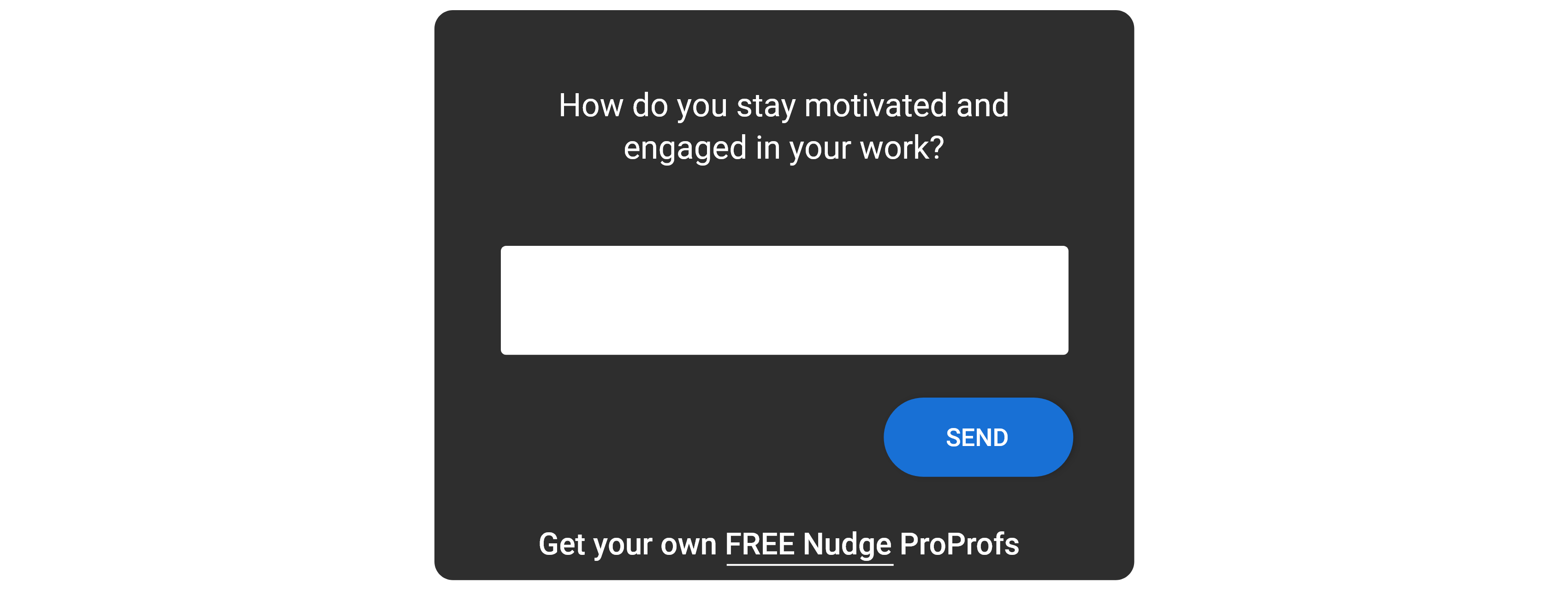
Adaptability and Flexibility
This category evaluates employees’ ability to adjust and thrive in changing circumstances and their flexibility in managing shifting priorities, handling unexpected changes, and embracing new ideas or methods.
- How well do you adapt to changes in the work environment?
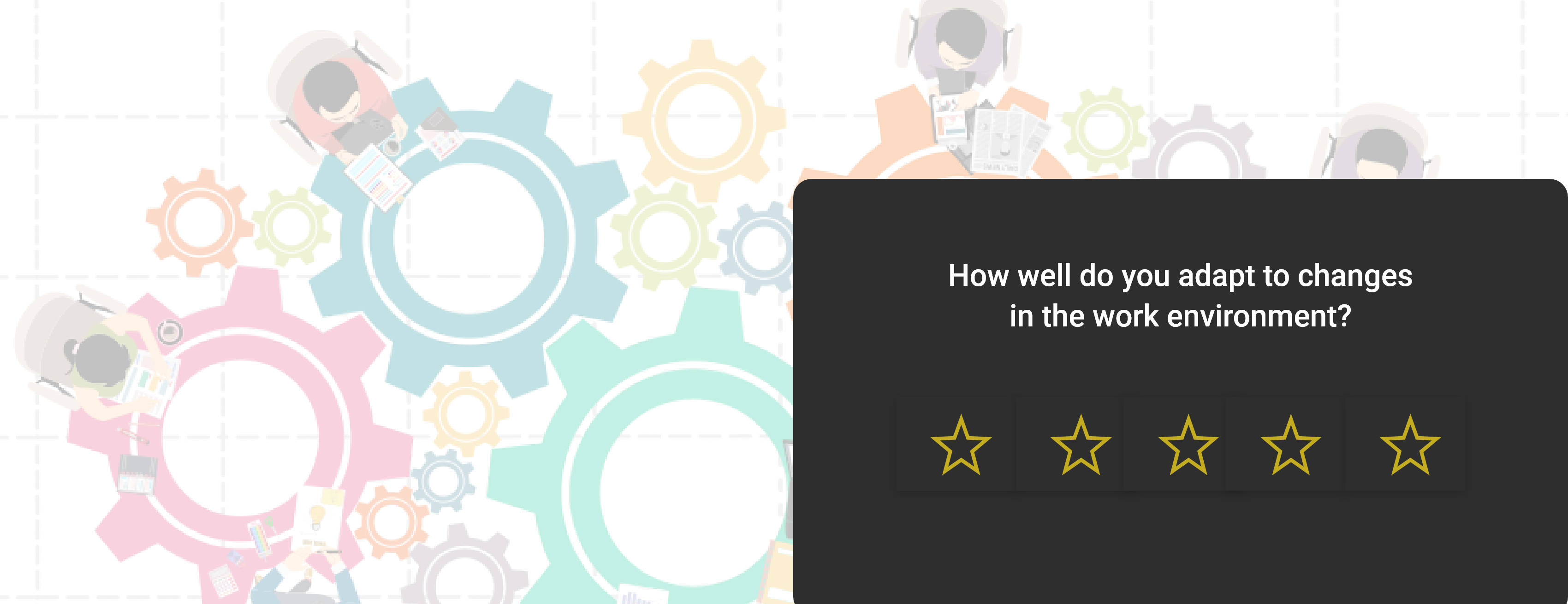
- Can you provide an example of a situation where you successfully adapted to unexpected changes?
- Are you open to feedback and willing to make changes based on feedback received?
- How do you handle multiple tasks and shifting priorities?
Work-Life Balance
This category focuses on employees’ ability to maintain a healthy balance between their work responsibilities and personal lives.
- How do you maintain a healthy work-life balance?
- Do you effectively manage work-related stress and prevent it from impacting your performance?
- Do you encourage work-life balance among your team members?
- Have you utilized any resources or company benefits to support your work-life balance?

Recommended Read: Employee Satisfaction Surveys: Your Way to a Happy Workforce
Customer Focus
This category evaluates employees’ ability to understand and meet customer needs and provide satisfactory customer experiences.
- How do you handle customer complaints or challenging situations?
- What steps do you take to improve customer experience?
- How do you measure and track customer satisfaction in your role?
- How well do you understand and meet customer needs and expectations?

Innovation and Creativity
This category examines employees’ ability to generate innovative ideas and solutions.
- Describe a time when you implemented a new idea or process to improve efficiency.
- How do you encourage and support innovation within your team?
- Do you actively seek out opportunities for process improvements?
- How do you explore creative approaches and solutions to problems?

Work Ethics and Accountability
This category assesses employees’ commitment to punctuality, responsibility, and fulfilling their work obligations.
- How well do you meet deadlines and deliver work on time?
- How do you handle responsibilities and take ownership of your work?
- How do you prioritize tasks and manage your workload effectively?
- Have you demonstrated a consistent level of workplace attendance and punctuality?
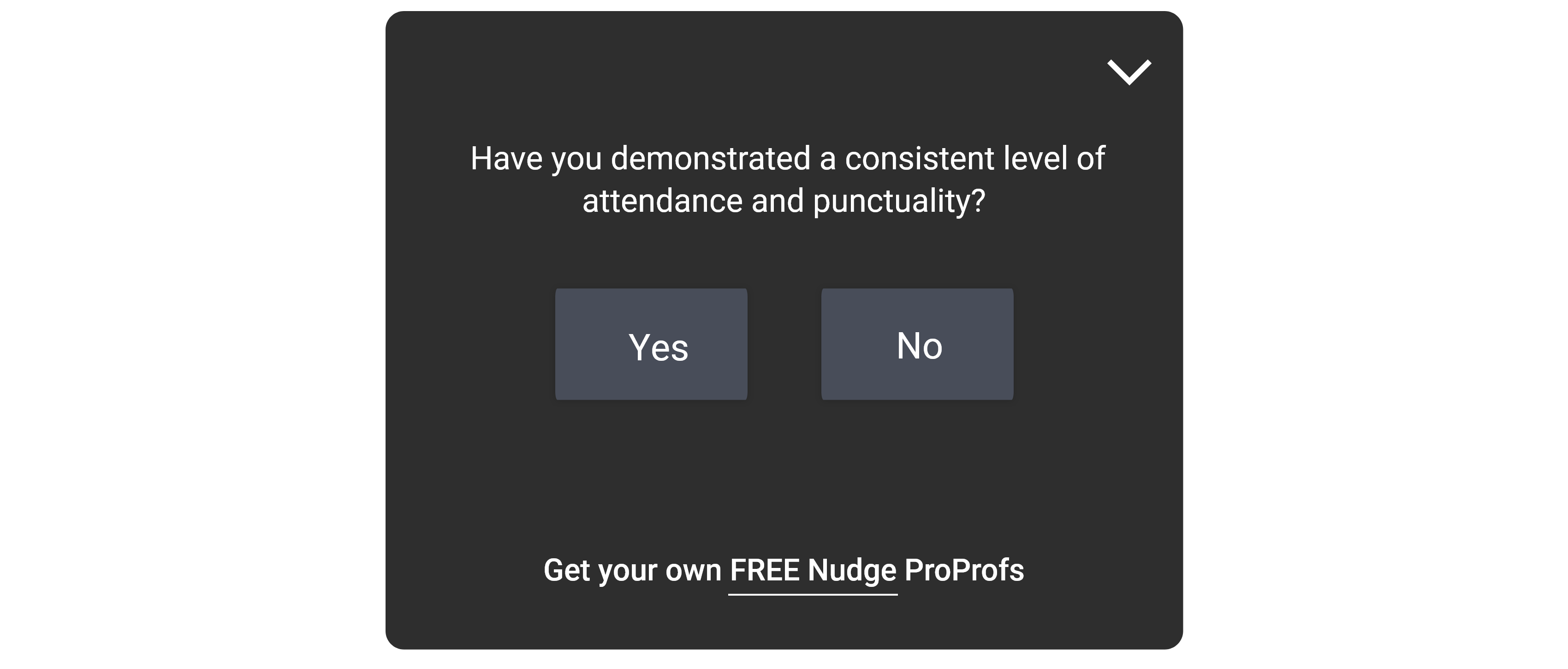
Ethics and Integrity
This category evaluates employees’ adherence to ethical standards and demonstration of integrity in their work.
- Can you provide an example of a situation where you demonstrated integrity in your decision-making?
- How do you maintain confidentiality and handle sensitive information?
- Have you actively promoted an ethical workplace culture?
- How do you ensure ethical conduct in your work?
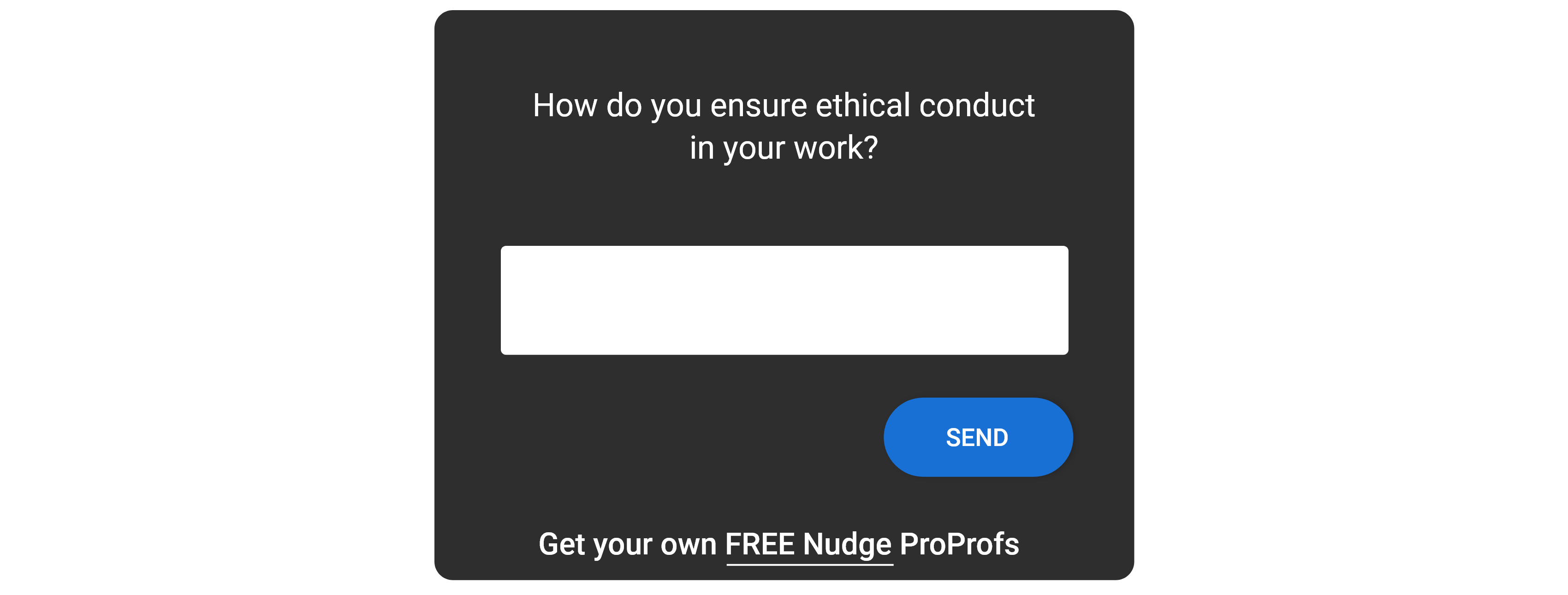
Training and Development
This category focuses on employees’ engagement in training and development activities to enhance their skills and knowledge.
- Have you actively participated in training and development opportunities provided by the organization?
- How do you apply the knowledge and skills gained from training programs?
- Can you mention some instances where you shared knowledge or mentored colleagues?

Recommended Read: 40 Employee Survey Questions For Maximizing Engagement
Best Practices for Creating Engaging Performance Evaluation Surveys
Here are some tips and best practices you can consider while creating your surveys to make them more engaging:
1. Keep Your Surveys Precise: Long surveys can lead to survey fatigue and decreased response rates. Keep the survey concise by focusing on key areas of evaluation.
2. Use Clear and Specific Questions: Ambiguous or overly broad questions can result in unclear or vague responses. Ensure that each question is straightforward and addresses a specific aspect of performance.
For example, instead of asking, “Do you communicate effectively?” consider asking, “How well do you articulate your thoughts in team meetings?”
3. Choose Different Question Types: Utilize various question types, such as multiple choice, rating scales, Likert scale, and open-ended questions, to gather different types of feedback. Different question types provide diverse perspectives and allow for easy data analysis.
4. Use Branching Logic: Implement branching logic, also known as skip logic, to personalize the survey experience. Branching logic allows respondents to skip or be directed to specific questions based on their previous responses. This creates a more customized and relevant survey for each respondent, leading to less survey abandonment.
For example, if an employee indicates that they do not have any direct reports, the survey can skip questions related to leadership and management.
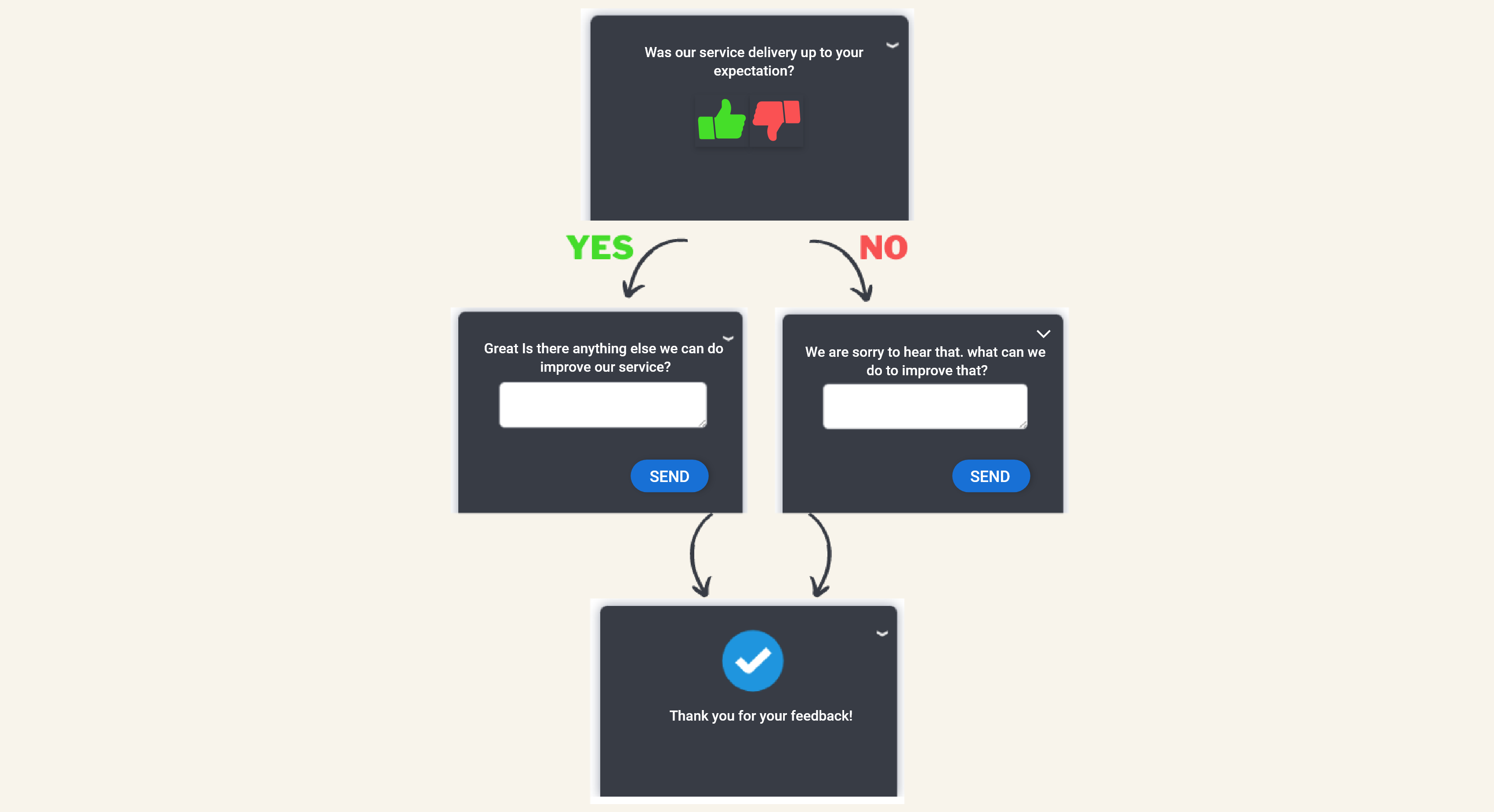
5. Collect Qualitative Data: In addition to performance-related questions, include questions that gauge employees’ emotional well-being and job satisfaction. This provides a holistic view of their performance.
For example, with Qualaroo’s sentiment analysis feature, you can measure how your employees feel about their workplace along with theirt6.
6. Use Visual Aids: Incorporate visual aids, such as graphs or charts, to present data and feedback in a visually appealing and easily understandable format. Visual aids enhance the clarity and impact of the survey results. For example, create a bar chart to display performance ratings across different categories.
7. Offer Incentives: To encourage participation, consider offering incentives for completing the survey. This can range from small rewards like gift cards or recognition to larger incentives like bonus opportunities. Incentives motivate employees to provide thoughtful and honest feedback.
8. Conduct A/B Testing: Test different versions of the survey to determine what works best for your organization. Experiment with variations in question-wording, layout, or question order to identify the most effective survey format.
Want to Conduct Effective Performance Evaluations? ✅
Provide clear and constructive feedback to drive progress.
FREE. All Features. FOREVER!
Try our Forever FREE account with all premium features!
Why Do You Need to Conduct a Performance Evaluation Survey?
Conducting a performance evaluation survey is essential for several reasons. Here is a detailed section on why organizations need to conduct performance evaluation surveys:
1. Assessing Individual Performance
Performance evaluation surveys provide a structured and objective way to measure how well employees are fulfilling their responsibilities, meeting goals, and contributing to the overall success of the organization.
This helps identify top performers, pinpoint areas for improvement, and provide targeted feedback and development opportunities.
2. Identifying Skill Gaps
Performance evaluation surveys help identify skill gaps within the workforce. By collecting feedback on specific competencies and skills, organizations can identify areas where employees may require additional training or development.
This information can be vital for designing training programs and implementing targeted interventions to enhance employee skills and performance.
3. Informed Decision-Making Processes
Performance evaluation surveys provide valuable data that can inform decision-making processes. The insights gathered from these surveys help organizations make informed decisions regarding promotions, job rotations, succession planning, and performance-based rewards and recognition.
Effective performance evaluation surveys equip decision-makers with concrete evidence to support their choices and ensure fairness and transparency in decision-making.
4. Enhancing Employee Engagement and Satisfaction
By seeking employees’ perspectives and feedback through surveys, organizations show that they value employee input and are committed to continuous improvement.
This, in turn, leads to a sense of ownership and engagement among employees, as they feel their voices are heard and their opinions matter.
Regular surveys also provide an opportunity for employees to voice their concerns, provide suggestions, and express their overall level of job satisfaction.
5. Setting Performance Goals
Performance evaluation surveys help in setting meaningful and achievable performance goals for employees. The feedback and data collected through surveys can be used to establish SMART (Specific, Measurable, Achievable, Relevant, Time-bound) goals that are aligned with both individual and organizational objectives.
6. Strengthening Communication and Feedback Practices
Performance evaluation surveys play a crucial role in strengthening communication and feedback practices within organizations. By creating a structured platform for feedback exchange, surveys facilitate open and honest communication between employees and their supervisors.
This feedback loop encourages ongoing dialogue, ensures that expectations are clear, and helps employees understand where they stand in terms of their p erformance and growth.
7. Driving Organizational Performance
Ultimately, performance evaluation surveys contribute to driving organizational performance. By systematically assessing and addressing individual and team performance, organizations can identify areas of excellence, optimize talent management strategies, and align employee efforts with organizational goals.
Boost Employee Performance with Effective Performance Evaluation Surveys
The data-driven approach offered by performance evaluation surveys is key to driving success and achieving organizational goals. These surveys help make informed choices and enhance employee engagement, leading to greater satisfaction all around.
Aside from these, employee evaluation surveys are great for setting performance goals, strengthening communication and feedback practices, and driving overall organizational performance.
These surveys facilitate a culture of continuous improvement, foster open communication, and empower employees to reach their full potential.
Qualaroo offers a powerful and user-friendly survey platform that can help you create engaging performance evaluation surveys. Get a free demo to learn more!
 Tips
Tips
We’d love to hear your tips & suggestions on this article!
FREE. All Features. FOREVER!
Try our Forever FREE account with all premium features!

 We'd love your feedback!
We'd love your feedback! Thanks for your feedback!
Thanks for your feedback!




